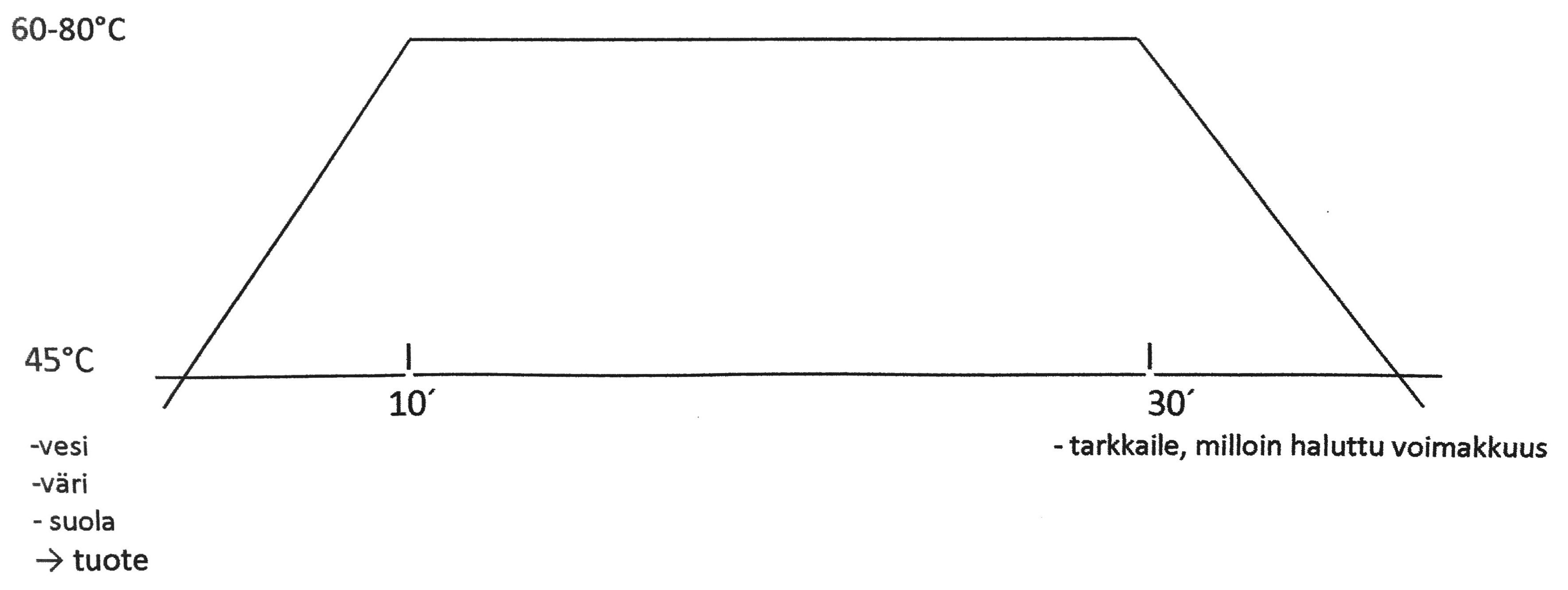OK7 Costume Workshop
Basics of dyeing
GENERAL INSTRUCTION
- Read the facility-specific occupational safety instructions and remember to protect yourself appropriately.
- Select the method and materials in accordance with your project.
- If you are unsure about the use of a specific chemical, contact the workshop master.
3. Dyeing with direct dyes
3.1. Dylon recipe
- Boil some water in a kettle.
- Place various (5) glasses by the sink and pour the boiling water in the glasses (you can add a pinch of salt if you want).
- Add a pinch of salt in the glass and mix thoroughly.
For example
Glass 1: Dye A 100
Glass 2: Dye B 100%
Glass 3: Dye A 50% + B 50%
Glass 4: Dye A 25% + B 75%
Glass 5: Dye B 25% + A 75%
- Insert the test fabrics in the glasses and wait for a moment.
- Dry the test strips with an iron and assess the colour.
- Continue the experiment until the colour is right and you have determined the correct ratio.
- Calculate the amount of dye for the recipe: 0.1–6% of the fabric’s dry weight = X grammes.
- Calculate how much (g) dye A and dye B you need.
Sample recipe (dyeing in a pot)
Material: a cotton T-shirt, 200g.
Pre-treatment: wash / rinse.
Liquor ratio: according to the size of the pot, so that the item can circulate easily in the dye bath.
Amount of dye:
Full shade 2–3% of dry weight = 20–30g dye / 1kg of material.
Dark shades: 4–6%.
Light shades: 0,1-2%.
Formula for full shade 2%: 0,02 (%) x 200 (g) = 4g dye.
Auxiliaries: Salt 125g / 5g dye.
Dyeing curve:

Sample recipe (dyeing in a machine)
Material: a cotton T-shirt, 200g.
Pre-treatment: wash.
Liquor ratio: 20l suffices for even a large amount of fabric, as the material circulates continuously in the machine (0,200kg x 20l = 1:200 is a very high ratio).
Amount of dye: see above.
Auxiliaries: salt 125g / 5g dye, at least 100g salt for each machine load.
Dyeing programme: Select a suitable dyeing programme and amount of water. See section 3.3 for more detailed instructions on how to add dye and auxiliaries into the machine.
Please note: There are pre-programmed settings for wool; turn the temperature dial to 1 "slow heating".
